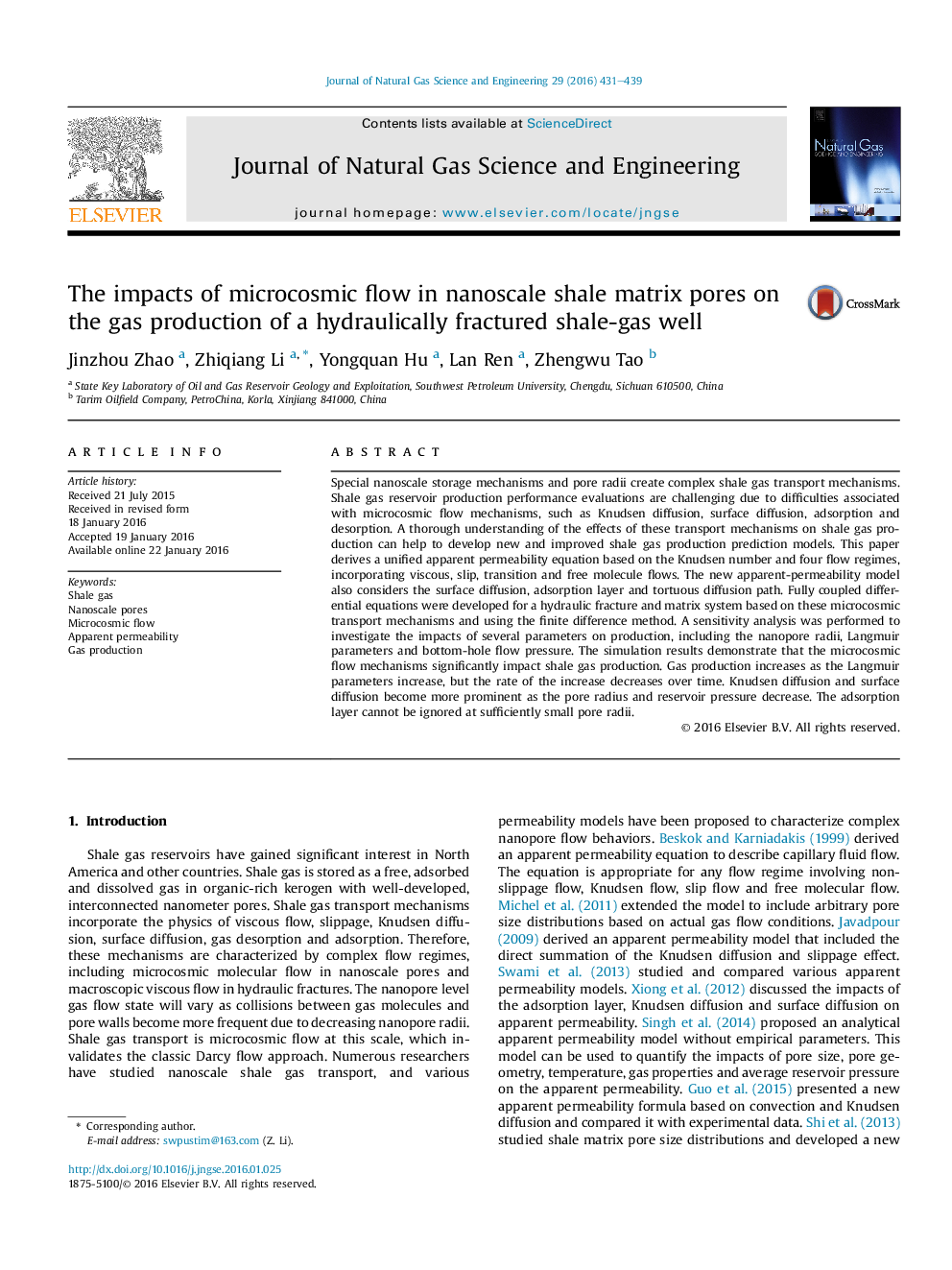| Article ID | Journal | Published Year | Pages | File Type |
|---|---|---|---|---|
| 1757374 | Journal of Natural Gas Science and Engineering | 2016 | 9 Pages |
•A unified apparent-permeability model based on multi-transport mechanisms was derived.•Fully coupled differential equations were developed for a hydraulic fracture and matrix system considering microcosmic flow mechanisms.•The effects of microflow mechanisms on production performance were quantitatively evaluated.
Special nanoscale storage mechanisms and pore radii create complex shale gas transport mechanisms. Shale gas reservoir production performance evaluations are challenging due to difficulties associated with microcosmic flow mechanisms, such as Knudsen diffusion, surface diffusion, adsorption and desorption. A thorough understanding of the effects of these transport mechanisms on shale gas production can help to develop new and improved shale gas production prediction models. This paper derives a unified apparent permeability equation based on the Knudsen number and four flow regimes, incorporating viscous, slip, transition and free molecule flows. The new apparent-permeability model also considers the surface diffusion, adsorption layer and tortuous diffusion path. Fully coupled differential equations were developed for a hydraulic fracture and matrix system based on these microcosmic transport mechanisms and using the finite difference method. A sensitivity analysis was performed to investigate the impacts of several parameters on production, including the nanopore radii, Langmuir parameters and bottom-hole flow pressure. The simulation results demonstrate that the microcosmic flow mechanisms significantly impact shale gas production. Gas production increases as the Langmuir parameters increase, but the rate of the increase decreases over time. Knudsen diffusion and surface diffusion become more prominent as the pore radius and reservoir pressure decrease. The adsorption layer cannot be ignored at sufficiently small pore radii.
